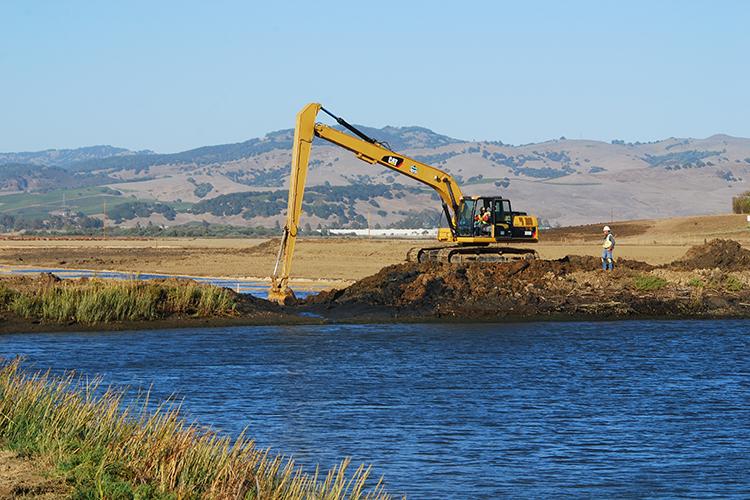NOAA conserves habitat to sustain the nation’s fisheries—but habitat isn’t valuable just for the home it provides for fish and wildlife. From jobs to seafood to tourism, coastal habitats are vital to America’s national and local economies.
Nature’s Benefits
The benefits that habitats provide—known as ecosystem services—support our day-to-day lives. Healthy habitats help keep our drinking water clean, protect us from storms and flooding, and support industries like boating, fishing, and tourism.
Healthy habitats support coastal economies in a variety of ways:
- Coastal and marine waters support more than 28 million jobs nationwide through recreation, tourism, commercial activities, and more.
- Coastal and estuary habitats are essential to more than 75 percent of our nation’s commercial fish catch and 80 to 90 percent of the recreational fish catch.
- Together, coastal regions support more than $8.8 trillion in economic output, nearly half of the nation’s gross domestic product.
- Coastal and marine tourism and recreation employs close to 2.5 million people and contributes approximately $143 billion in gross domestic product to the economy each year.
- Coastal wetlands can reduce the damage caused by hurricanes, storms, and tides, saving vulnerable coastal communities more than $23 billion each year.
Conserving Habitat Supports Coastal Communities
When habitats are damaged or destroyed, the ecosystem services they provide suffer as well. By protecting and restoring coastal habitat, NOAA helps conserve these important benefits. This results in tangible results for communities, such as higher property values, lower infrastructure costs, and increased resilience and protection from coastal storms and flooding.
For example, a NOAA-supported wetland restoration project in Huntington Beach, California, increased residential property values by $36.3 million. In Washington’s Skagit River delta, another marsh restoration project is expected to provide up to $21 million dollars in benefits (PDF, 33 pages) by reducing the risk of flood damage and drainage maintenance costs over 50 years.
Below, learn about two more examples of how NOAA’s habitat restoration efforts have benefitted local economies.
Higher Property Values in Muskegon, Michigan
Through the 2009 American Recovery and Reinvestment Act, NOAA invested $10 million into habitat restoration in Muskegon, Michigan. Between 2010 and 2012, this effort removed 180,000 tons of unnatural fill from the bottom of Muskegon Lake and rehabilitated nearly a mile of shoreline.
A 2011 coastal restoration study determined that, over 15 years, this $10 million investment would generate:
- A $12 million increase in property values
- Up to $600,000 in new tax revenue annually
- More than $1 million in new recreational spending
A 2020 follow-up study found that, so far, the community had seen a $7.9 million increase in area property values and $27.9 million in added recreational benefits annually. In addition to our Recovery Act-funded efforts, we continue to work with partners in the Muskegon Lake region to help restore this important ecosystem and bring added benefits to the community.
Increased Flood Protection in Tillamook, Oregon
In 2016, NOAA and partners restored tidal wetlands to provide habitat for salmon and reduce flooding in Tillamook, Oregon. The Southern Flow Corridor project created 443 acres of wetlands, opened 13 miles of tidal channels to migratory fish, and reduced flooding to 4,800 acres of the surrounding community. An analysis of the project estimated that $9.2 million in economic benefits will accrue from avoided flood damages over 50 years.
A 2021 report found that, in addition to creating habitat and reducing flooding, the project supported 108 jobs and $14.6 million in total economic output in Oregon. Additional benefits included:
- Increasing the value of homes in nearby residential areas by 10 percent, with an average benefit of $19,000 per home
- Reducing flooding on Highway 101, leading to fewer highway closures and saving approximately $7,200 in travel costs per flooding event
- Improving water quality by reducing the amount of sediment, saving approximately $1,500 to $8,000 per year by decreasing how much dredging is needed to maintain shipping lanes


